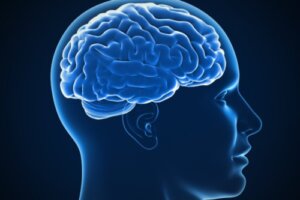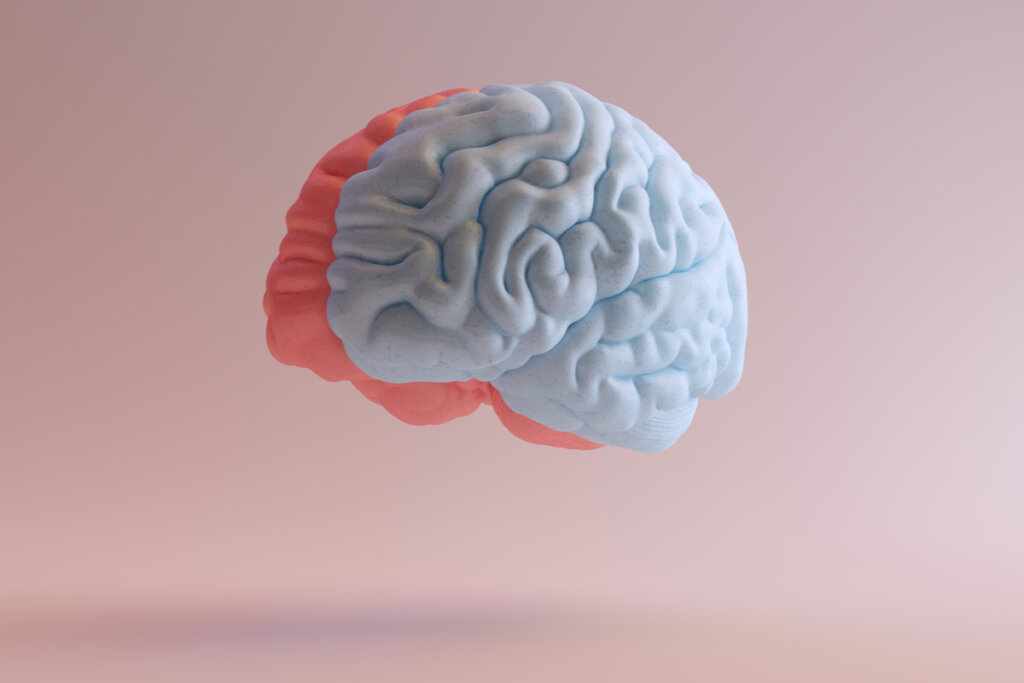John Horn and His Contributions to the Study of Intelligence


Written and verified by the psychologist Gorka Jiménez Pajares
Intelligence is an adaptive advantage. However, what does it mean to be smart? What are the traits that characterize people with high intelligence?
Psychologists have been attempting to find the answer to this question for more than 150 years. Consequently, there are numerous theories. In this article, we’re going to consider the model of cognitive abilities proposed by John Horn.
There have been many definitions of the concept of intelligence. This has resulted in a multitude of tests and questionnaires for its measurement. For example, the renowned Wechsler intelligence scale. One conclusion can be drawn from the available research. It’s the fact that intelligence encompasses a multitude of abilities.
Intelligent behavior implies that we’re able to solve problems effectively. It also alludes to the ability of knowing how to adapt to our environments. If we take this fact into account, all human beings and animals are intelligent.

Intelligence
The definition of intelligence has always been linked to how it’s measured.
- Ebbinghaus (1885) saw it as the ability to adapt to changing and novel situations.
- Binet (1916) referred to more specific capacities. More specifically, to executive functions (those that characterize us as humans). For instance, memory, perception, and attention.
- Sternberg (1990) claims that there are three types of intelligence. Intelligence A refers to the innate potential of human beings to learn from their environment. Intelligence B refers to practical intelligence (the manifestations of intelligence in everyday life). Finally, Intelligence C refers to the scores of intelligence that the tests show.
The psychologist John Horn, with Raymond Cattell, created a model of cognitive abilities that successfully combined a multitude of variables involved in intelligent behavior. Among these are genetic aspects, personal development, and academic results.
“Intelligence is organized in a hierarchical way.”
-John Horn-
The computational metaphor and the Cattell-Horn model
According to this approach, the human mind works in the same way as a computer. Our intelligence is due to, firstly, the genetic endowment of our brains (the hardware or structural aspect). It includes functions such as memory, perceptive speed, or the ability to classify concepts. Secondly, our intelligence is due to the ability to evaluate and make judgments from our experiences or to make judgments and draw conclusions (the software or functional aspect).
Fluid intelligence
Fluid intelligence alludes to the structural aspect. It includes the capacities with which we were born. It refers to the ability to face situations in a novel and flexible manner without taking into account any prior learning.
This kind of intelligence refers to our ability to induce (to be able to reach conclusions by identifying patterns in things that happen to us) or to deduce (extract assessments from facts). In addition, it alludes to the breadth of associative memory (recovering stored information when associated with other information) or intellectual speed.
Fluid intelligence reaches its maximum development in adolescence. From then on, it declines, due to aging and the deterioration of brain structures.
“Metaphorically, fluid intelligence would represent a kind of flowing waterfall that extends throughout the entire flow that contains it.”
-Angeles Sánchez-Elvira-
Crystallized intelligence
Crystallized intelligence refers to knowledge that we’ve been acquiring as a result of our experiences and our relationships with our environments. It’s the result of the unique and unrepeatable biographical history of each human being.
This kind of intelligence is made up of multiple capacities. For instance, being able to establish meaningful relationships between elements (eg. knowing that an elephant is a mammal), the ability to understand verbally, and mechanical knowledge (eg. knowing how to drive).
Crystallized intelligence never decreases, unless there’s the presence of a disorder. In fact, it has the potential to continue increasing over time.
“Metaphorically, crystallized intelligence can be represented as a diamond that has been changed and polished (worked on) from the environmental conditions in which it developed and from learning experiences.”
-Ángeles Sánchez-Elvira-
The Horn model
John Horn was a disciple of Raymond Cattell who was considered to be one of the most important psychologists in the study of intelligence. Horn proposed there should be another six factors added to the two mentioned above (fluid and crystallized intelligence). They’re as follows:
Visual perception or processing
The ability to visually process our surroundings and the ability to make use of simulated mental imagery to solve problems. For example, imagine a chair and try to make it spin in your mind. This ability is called object rotation. The fluidity and speed with which we do it were important to Horn.
Auditory processing
The ability to perceive, analyze, and synthesize patterns among auditory stimuli, and to discriminate subtle nuances in patterns of sound. It’s measured through tasks consisting of various sound patterns that are subjected to some type of distraction or distortion. For instance, imagine that you’re listening to your favorite song but it’s subjected to a strong echo.
Speed of processing
This is an executive function par excellence. What’s two multiplied by 146? What’s the capital of Italy? What weighs more: a kilogram of straw or a kilogram of steel? If you’ve responded quickly to these questions, you probably have a good speed of processing. It’s a skill that’s intensely involved in virtually all intellectual tasks. It’s considered to be central to intelligence research.
“Processing speed can be measured by simple intellectual tasks in which almost everyone could give a correct answer given enough time.”
-Ángeles Sánchez-Elvira-
Reaction time and decision speed
This consists of the speed with which we issue judgments on problems that require solutions. It’s closely related to the speed of processing as it requires a certain speed in the issuance of our responses.
Short term memory
How much new information are you able to retain for a few seconds without the need for elaboration? Short-term memory consists of memories stored for a limited time. It’s circumscribed to the present moment.
Different investigations have found that its amplitude oscillates around the number five. This means that, as a rule, we’re able to instantly remember five units of information. For example, five names, five numbers, etc.
Short-term memory refers to our ability to recall new information immediately.
Long-term memory storage and retrieval
Long-term memory is the store of unlimited information. It’s here that we store all the information that we’ve worked on, elaborated, processed, and related to other information. It’s the store of information that we retrieve later. This could be minutes, days, months, or even decades later.

Later, Horn added quantitative and broad reading writing to his model. It was ultimately expanded into an eight-factor model known as the Cattell-Horn Gf-Gc theory.
The Horn model is based on the fact that simple psychological processes (such as the ability to associate elements) are the foundation on which more complex cognitive skills are based (such as fluid and crystallized intelligence). Horn believed that this process develops in a hierarchical way. Therefore, the simplest functions begin at birth and, as the individual grows, the others develop.
“Simple psychological processes make it possible for higher psychological processes to stand out from the rest in adulthood.”
-Juan-Espinosa-
Intelligence is an adaptive advantage. However, what does it mean to be smart? What are the traits that characterize people with high intelligence?
Psychologists have been attempting to find the answer to this question for more than 150 years. Consequently, there are numerous theories. In this article, we’re going to consider the model of cognitive abilities proposed by John Horn.
There have been many definitions of the concept of intelligence. This has resulted in a multitude of tests and questionnaires for its measurement. For example, the renowned Wechsler intelligence scale. One conclusion can be drawn from the available research. It’s the fact that intelligence encompasses a multitude of abilities.
Intelligent behavior implies that we’re able to solve problems effectively. It also alludes to the ability of knowing how to adapt to our environments. If we take this fact into account, all human beings and animals are intelligent.

Intelligence
The definition of intelligence has always been linked to how it’s measured.
- Ebbinghaus (1885) saw it as the ability to adapt to changing and novel situations.
- Binet (1916) referred to more specific capacities. More specifically, to executive functions (those that characterize us as humans). For instance, memory, perception, and attention.
- Sternberg (1990) claims that there are three types of intelligence. Intelligence A refers to the innate potential of human beings to learn from their environment. Intelligence B refers to practical intelligence (the manifestations of intelligence in everyday life). Finally, Intelligence C refers to the scores of intelligence that the tests show.
The psychologist John Horn, with Raymond Cattell, created a model of cognitive abilities that successfully combined a multitude of variables involved in intelligent behavior. Among these are genetic aspects, personal development, and academic results.
“Intelligence is organized in a hierarchical way.”
-John Horn-
The computational metaphor and the Cattell-Horn model
According to this approach, the human mind works in the same way as a computer. Our intelligence is due to, firstly, the genetic endowment of our brains (the hardware or structural aspect). It includes functions such as memory, perceptive speed, or the ability to classify concepts. Secondly, our intelligence is due to the ability to evaluate and make judgments from our experiences or to make judgments and draw conclusions (the software or functional aspect).
Fluid intelligence
Fluid intelligence alludes to the structural aspect. It includes the capacities with which we were born. It refers to the ability to face situations in a novel and flexible manner without taking into account any prior learning.
This kind of intelligence refers to our ability to induce (to be able to reach conclusions by identifying patterns in things that happen to us) or to deduce (extract assessments from facts). In addition, it alludes to the breadth of associative memory (recovering stored information when associated with other information) or intellectual speed.
Fluid intelligence reaches its maximum development in adolescence. From then on, it declines, due to aging and the deterioration of brain structures.
“Metaphorically, fluid intelligence would represent a kind of flowing waterfall that extends throughout the entire flow that contains it.”
-Angeles Sánchez-Elvira-
Crystallized intelligence
Crystallized intelligence refers to knowledge that we’ve been acquiring as a result of our experiences and our relationships with our environments. It’s the result of the unique and unrepeatable biographical history of each human being.
This kind of intelligence is made up of multiple capacities. For instance, being able to establish meaningful relationships between elements (eg. knowing that an elephant is a mammal), the ability to understand verbally, and mechanical knowledge (eg. knowing how to drive).
Crystallized intelligence never decreases, unless there’s the presence of a disorder. In fact, it has the potential to continue increasing over time.
“Metaphorically, crystallized intelligence can be represented as a diamond that has been changed and polished (worked on) from the environmental conditions in which it developed and from learning experiences.”
-Ángeles Sánchez-Elvira-
The Horn model
John Horn was a disciple of Raymond Cattell who was considered to be one of the most important psychologists in the study of intelligence. Horn proposed there should be another six factors added to the two mentioned above (fluid and crystallized intelligence). They’re as follows:
Visual perception or processing
The ability to visually process our surroundings and the ability to make use of simulated mental imagery to solve problems. For example, imagine a chair and try to make it spin in your mind. This ability is called object rotation. The fluidity and speed with which we do it were important to Horn.
Auditory processing
The ability to perceive, analyze, and synthesize patterns among auditory stimuli, and to discriminate subtle nuances in patterns of sound. It’s measured through tasks consisting of various sound patterns that are subjected to some type of distraction or distortion. For instance, imagine that you’re listening to your favorite song but it’s subjected to a strong echo.
Speed of processing
This is an executive function par excellence. What’s two multiplied by 146? What’s the capital of Italy? What weighs more: a kilogram of straw or a kilogram of steel? If you’ve responded quickly to these questions, you probably have a good speed of processing. It’s a skill that’s intensely involved in virtually all intellectual tasks. It’s considered to be central to intelligence research.
“Processing speed can be measured by simple intellectual tasks in which almost everyone could give a correct answer given enough time.”
-Ángeles Sánchez-Elvira-
Reaction time and decision speed
This consists of the speed with which we issue judgments on problems that require solutions. It’s closely related to the speed of processing as it requires a certain speed in the issuance of our responses.
Short term memory
How much new information are you able to retain for a few seconds without the need for elaboration? Short-term memory consists of memories stored for a limited time. It’s circumscribed to the present moment.
Different investigations have found that its amplitude oscillates around the number five. This means that, as a rule, we’re able to instantly remember five units of information. For example, five names, five numbers, etc.
Short-term memory refers to our ability to recall new information immediately.
Long-term memory storage and retrieval
Long-term memory is the store of unlimited information. It’s here that we store all the information that we’ve worked on, elaborated, processed, and related to other information. It’s the store of information that we retrieve later. This could be minutes, days, months, or even decades later.

Later, Horn added quantitative and broad reading writing to his model. It was ultimately expanded into an eight-factor model known as the Cattell-Horn Gf-Gc theory.
The Horn model is based on the fact that simple psychological processes (such as the ability to associate elements) are the foundation on which more complex cognitive skills are based (such as fluid and crystallized intelligence). Horn believed that this process develops in a hierarchical way. Therefore, the simplest functions begin at birth and, as the individual grows, the others develop.
“Simple psychological processes make it possible for higher psychological processes to stand out from the rest in adulthood.”
-Juan-Espinosa-
All cited sources were thoroughly reviewed by our team to ensure their quality, reliability, currency, and validity. The bibliography of this article was considered reliable and of academic or scientific accuracy.
-
Ardila, R. (2011). Inteligencia.¿ Qué sabemos y qué nos falta por investigar?. Revista de la Academia Colombiana de Ciencias Exactas, Físicas y Naturales, 35(134), 97-103.
-
Paniagua, S. Á. M. (2022). Introduccion Al Estudio De Las Diferencias Individuales ((2? Ed.). Sanz Y Torres, S.l.
-
Schneider, W. J., & McGrew, K. S. (2018). The Cattell–Horn–Carroll theory of cognitive abilities.
-
Amador, J. A. (2013). Escala de inteligencia de Wechsler para adultos-IV (WAIS-IV).
This text is provided for informational purposes only and does not replace consultation with a professional. If in doubt, consult your specialist.







